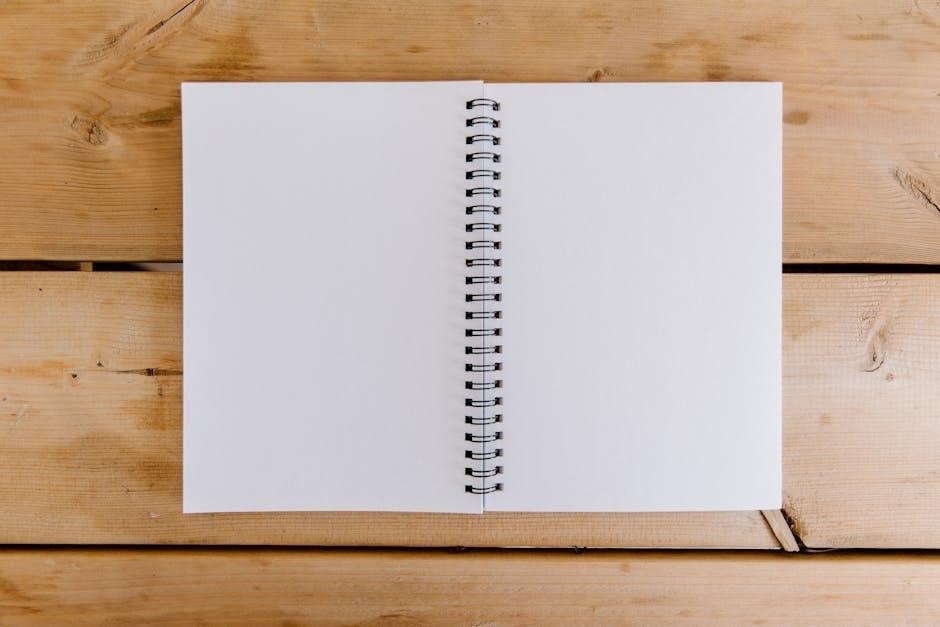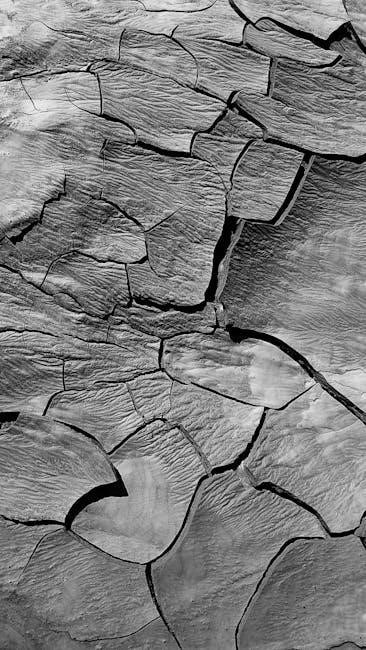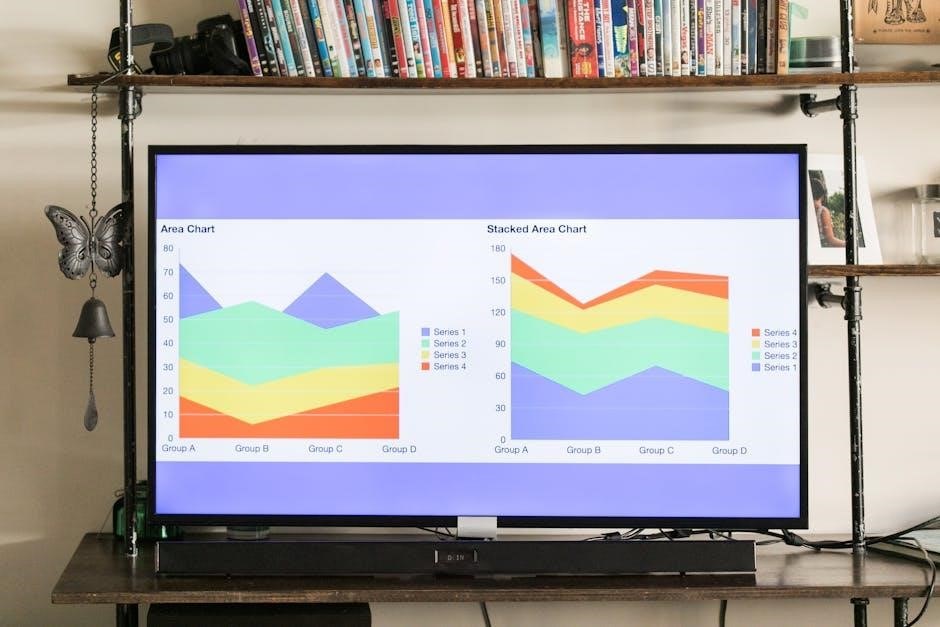
unit 11 test study guide volume and surface area
Unit 11 Test Study Guide: Volume and Surface Area
Welcome to your comprehensive study guide for Unit 11, focusing on volume and surface area! This guide will help you prepare for your upcoming test. Review key formulas, practice problems, and essential concepts.
Overview of Unit 11
Unit 11 delves into the fascinating world of three-dimensional geometry, specifically focusing on calculating volume and surface area. This unit is crucial for understanding how much space an object occupies (volume) and the total area of its outer surfaces (surface area). Prepare to explore various shapes, including rectangular prisms, cylinders, spheres, cones, and pyramids.
Throughout this unit, you’ll learn essential formulas and techniques for calculating these measurements accurately. Mastering these concepts will enable you to solve real-world problems, from designing containers to calculating the amount of material needed for construction projects. Emphasis will be placed on understanding the relationship between two-dimensional shapes (like rectangles, triangles, and circles) and their three-dimensional counterparts. By the end of this unit, you’ll be proficient in applying these formulas and solving complex problems involving volume and surface area. Practice is key, so utilize all available resources, including examples and practice questions. Good luck with your studies!

Key Concepts: Volume
Volume, a fundamental concept in geometry, quantifies the three-dimensional space occupied by an object. Understanding how to calculate volume is essential for various applications, from determining the capacity of containers to estimating the amount of material needed for construction. In Unit 11, we explore volume calculations for several common geometric shapes.
Key to mastering volume is understanding the underlying formulas. Each shape has a specific formula that relates its dimensions to its overall volume. For instance, the volume of a rectangular prism is found by multiplying its length, width, and height. Similarly, the volume of a cylinder depends on the area of its circular base and its height. We will also delve into calculating the volumes of more complex shapes such as spheres, cones, and pyramids. Remember to pay close attention to the units of measurement and ensure consistency throughout your calculations. Practice applying these formulas to a variety of problems to solidify your understanding of volume.
Volume of a Rectangular Prism

The volume of a rectangular prism is a fundamental concept in geometry. A rectangular prism is a three-dimensional shape with six rectangular faces. Calculating its volume is straightforward and relies on three key measurements: length (l), width (w), and height (h).
The formula for the volume (V) of a rectangular prism is simply: V = lwh. This means you multiply the length, width, and height together to find the volume. It’s crucial to ensure that all measurements are in the same units before performing the calculation. For example, if the length is in centimeters and the width and height are in meters, you must convert all measurements to either centimeters or meters before multiplying.
Understanding this formula allows you to solve practical problems, such as determining the amount of space inside a box or calculating the volume of a room. Practice various problems with different dimensions to solidify your understanding.

Volume of a Cylinder

The volume of a cylinder is an essential concept in understanding three-dimensional shapes. A cylinder is a solid geometric figure with straight parallel sides and a circular or oval cross section. To calculate the volume of a cylinder, you need two key measurements: the radius (r) of the circular base and the height (h) of the cylinder.
The formula for the volume (V) of a cylinder is given by: V = πr²h, where π (pi) is approximately equal to 3.14159. This formula essentially calculates the area of the circular base (πr²) and then multiplies it by the height of the cylinder.
When solving problems involving the volume of a cylinder, ensure that the radius and height are in the same units. If they are not, convert them to the same unit before applying the formula. Understanding this calculation is useful in many real-world applications, such as determining the capacity of cylindrical tanks or containers. Practice with various examples to master this concept.
Volume of a Sphere
Calculating the volume of a sphere is a key skill in geometry. A sphere is a perfectly round geometrical object in three-dimensional space, such as the shape of a ball. Unlike cylinders or prisms, a sphere is defined by a single measurement: its radius (r). The radius is the distance from the center of the sphere to any point on its surface.
The formula for the volume (V) of a sphere is given by: V = (4/3)πr³, where π (pi) is approximately 3.14159. This formula indicates that the volume of a sphere is directly proportional to the cube of its radius.
When calculating the volume, ensure that you correctly apply the order of operations, cubing the radius before multiplying by (4/3)π. Understanding the volume of a sphere is applicable in various fields, including physics and engineering, for calculations involving spherical objects. Practice with different values of radii to become proficient in using this formula. Also, remember to express your final answer in cubic units.
Volume of a Cone
Determining the volume of a cone is an essential skill in geometry. A cone is a three-dimensional geometric shape that tapers smoothly from a flat base (usually a circle) to a point called the apex or vertex. To calculate the volume of a cone, you need two key measurements: the radius (r) of the circular base and the height (h) of the cone, which is the perpendicular distance from the base to the apex.
The formula for the volume (V) of a cone is given by: V = (1/3)πr²h, where π (pi) is approximately 3.14159. This formula reveals that the volume of a cone is one-third the volume of a cylinder with the same base radius and height.
When applying the formula, ensure you square the radius before multiplying by the height and (1/3)π. Pay close attention to the units of measurement and ensure consistency throughout the calculation. Practice applying this formula with different cones to master the concept. Also, remember to express your final answer in cubic units.

Volume of a Pyramid
Calculating the volume of a pyramid is a crucial concept in geometry. A pyramid is a polyhedron formed by connecting a polygonal base and a point, called the apex. The volume of a pyramid depends on the area of its base and its height, which is the perpendicular distance from the base to the apex.
The general formula for the volume (V) of a pyramid is: V = (1/3) * Base Area * Height. The “Base Area” refers to the area of the pyramid’s base, which could be a triangle, square, rectangle, or any other polygon. Thus, you must first calculate the base area before you can find the volume.
For instance, if the base is a square with side length ‘s’, the base area is s². If the base is a triangle, you would use the appropriate triangle area formula (1/2 * base * height). Once you have the base area, multiply it by the height of the pyramid and then multiply the result by (1/3) to find the volume; Remember to state the units of measurement in cubic units.
Key Concepts: Surface Area

Surface area is a measure of the total area that the surface of a three-dimensional object occupies. Understanding how to calculate surface area is essential in various fields, from engineering and architecture to packaging and design. It involves summing the areas of all the faces or surfaces of a solid figure.
For polyhedra like prisms and pyramids, this means finding the area of each face (squares, rectangles, triangles) and adding them together. For curved shapes like cylinders, cones, and spheres, specific formulas are used that incorporate dimensions such as radius, height, and slant height. The surface area is always expressed in square units (e.g., square inches, square meters).
Mastering surface area calculations requires a solid grasp of area formulas for basic two-dimensional shapes. Recognizing the components of each 3D shape and applying the correct formula are critical skills for success in this topic.
Surface Area of a Rectangular Prism
The surface area of a rectangular prism is the sum of the areas of all its six faces. Since a rectangular prism has three pairs of congruent faces, the formula simplifies to: 2lw + 2lh + 2wh, where ‘l’ is the length, ‘w’ is the width, and ‘h’ is the height.
To calculate, first find the area of each unique face: one face will have an area of length times width (lw), another will have length times height (lh), and the last will have width times height (wh). Then, multiply each of these areas by two, since there are two identical faces for each dimension. Finally, add these three results together to obtain the total surface area.
Remember to express your answer in square units. Understanding this formula allows you to determine the amount of material needed to cover the outside of a rectangular box or container.
Surface Area of a Cylinder

The surface area of a cylinder comprises the areas of its two circular bases and its lateral surface. The formula to calculate it is: 2πr² + 2πrh, where ‘r’ is the radius of the base and ‘h’ is the height of the cylinder.
The 2πr² part of the formula calculates the area of the two circular bases. The area of one circle is πr², and since there are two identical bases, we multiply by two. The 2πrh part of the formula calculates the lateral surface area, which is the area of the curved surface that connects the two bases. This can be visualized as unwrapping the cylinder into a rectangle, where one side is the height ‘h’ and the other side is the circumference of the base (2πr).
Remember that surface area is always measured in square units. Understanding how to calculate surface area is useful in various applications, such as determining the amount of material needed to construct a cylindrical container.

Surface Area of a Sphere
Calculating the surface area of a sphere involves a specific formula that directly relates the radius of the sphere to its outer area. The formula for the surface area of a sphere is given by 4πr², where ‘r’ represents the radius of the sphere.
This formula might seem abstract, but it’s derived from integral calculus and represents the total area covering the sphere’s curved surface. Unlike shapes with flat surfaces, a sphere has a uniformly curved surface, making its surface area calculation unique.
To use the formula, simply square the radius of the sphere, multiply it by π (approximately 3.14159), and then multiply the result by 4. The result will be the surface area of the sphere in square units. For example, if a sphere has a radius of 5 cm, its surface area would be 4 * π * (5 cm)² = 100π cm², or approximately 314.16 cm². Understanding this formula is essential for various applications.
Surface Area of a Cone
The surface area of a cone encompasses two distinct parts: the area of its circular base and the lateral surface area, which is the curved surface extending from the base to the apex. To calculate the total surface area, you need to sum these two areas.
The area of the circular base is straightforward and is given by πr², where ‘r’ is the radius of the base. The lateral surface area, however, requires a bit more consideration. It is calculated using the formula πrl, where ‘l’ represents the slant height of the cone. The slant height is the distance from the apex of the cone to any point on the edge of the circular base.
Therefore, the total surface area of a cone is expressed as πr² + πrl. Understanding this formula is crucial. Remember to use consistent units for all measurements. Knowing how to find the slant height when it’s not directly given is also important.
Surface Area of a Pyramid
Calculating the surface area of a pyramid involves finding the sum of the areas of all its faces. A pyramid consists of a base and triangular faces that meet at a common vertex. The base can be any polygon, but the most common case is a square base.
To find the surface area, first, determine the area of the base. If it’s a square, the area is simply the side length squared (s²). Then, calculate the area of each triangular face. The area of a triangle is (1/2) * base * height. In this context, the base of the triangle is one of the sides of the pyramid’s base, and the height is the slant height of the pyramid.
For a regular pyramid (one with a regular polygon as its base and all triangular faces congruent), you can calculate the area of one triangular face and multiply by the number of faces. Finally, add the area of the base to the total area of the triangular faces to get the total surface area of the pyramid.
Area Formulas Review

Before diving into volume and surface area, let’s refresh our understanding of basic area formulas. These formulas are fundamental for calculating the surface area of various 3D shapes, so mastering them is crucial.
First, consider the area of a rectangle. This is found by multiplying its length (l) by its width (w): Area = l * w. A special case of a rectangle is the square, where all sides are equal. Thus, the area of a square is the side length (s) squared: Area = s².
Next, recall the area of a triangle. This is calculated as half the product of its base (b) and height (h): Area = (1/2) * b * h. Remember that the height must be perpendicular to the base. These basic area formulas form the building blocks for understanding more complex geometric calculations. Make sure you are comfortable with these before moving on!
Area of a Triangle
Understanding the area of a triangle is vital for various geometric calculations, especially when dealing with surface area. The formula for the area of a triangle is: Area = (1/2) * base * height, often written as A = (1/2)bh. Here, ‘b’ represents the length of the triangle’s base, and ‘h’ represents the perpendicular height from the base to the opposite vertex.
It’s crucial to remember that the height must form a right angle with the base. If you’re given the lengths of all three sides but not the height, you might need to use other methods, such as Heron’s formula, to find the area. However, for this review, focus on applying A = (1/2)bh effectively. Practice identifying the base and corresponding height in different triangle orientations to solidify your understanding.
Area of a Rectangle
Calculating the area of a rectangle is a fundamental skill in geometry, essential for understanding surface area calculations within Unit 11. The formula for the area of a rectangle is straightforward: Area = length * width, commonly written as A = lw. Here, ‘l’ represents the length of the rectangle, and ‘w’ represents its width.
Rectangles, as quadrilaterals with four right angles, simplify area calculations since the length and width are always perpendicular. This contrasts with parallelograms, where the height must be determined. Remember that when computing surface areas of 3D shapes like rectangular prisms, you’ll often need to calculate the areas of multiple rectangular faces. Therefore, a firm grasp of A = lw is crucial. Practice applying this formula to various rectangles, ensuring you correctly identify the length and width dimensions to master the concept.
Area of a Square
Calculating the area of a square is a special case of finding the area of a rectangle. Since a square has four equal sides, its area is found by squaring the length of one of its sides. The formula is Area = side * side, or A = s², where ‘s’ represents the length of a side.
Understanding this formula is vital as squares frequently appear in geometric problems, especially when dealing with the surface area of cubes or pyramids. Recognizing that all sides are equal simplifies the calculation significantly. Be sure to use consistent units for the side length to ensure accurate area calculations.
Practicing with various side lengths will solidify your understanding. Remember, mastering the area of a square is a stepping stone to tackling more complex geometric shapes and problems within Unit 11. Pay close attention to units!